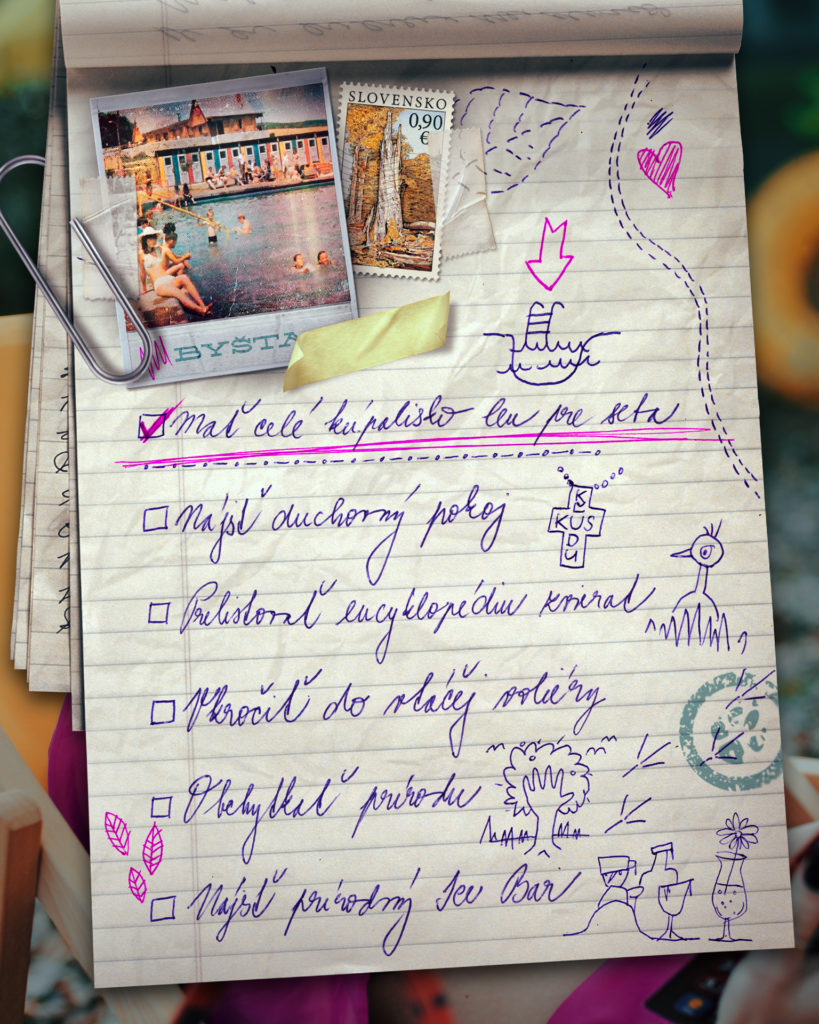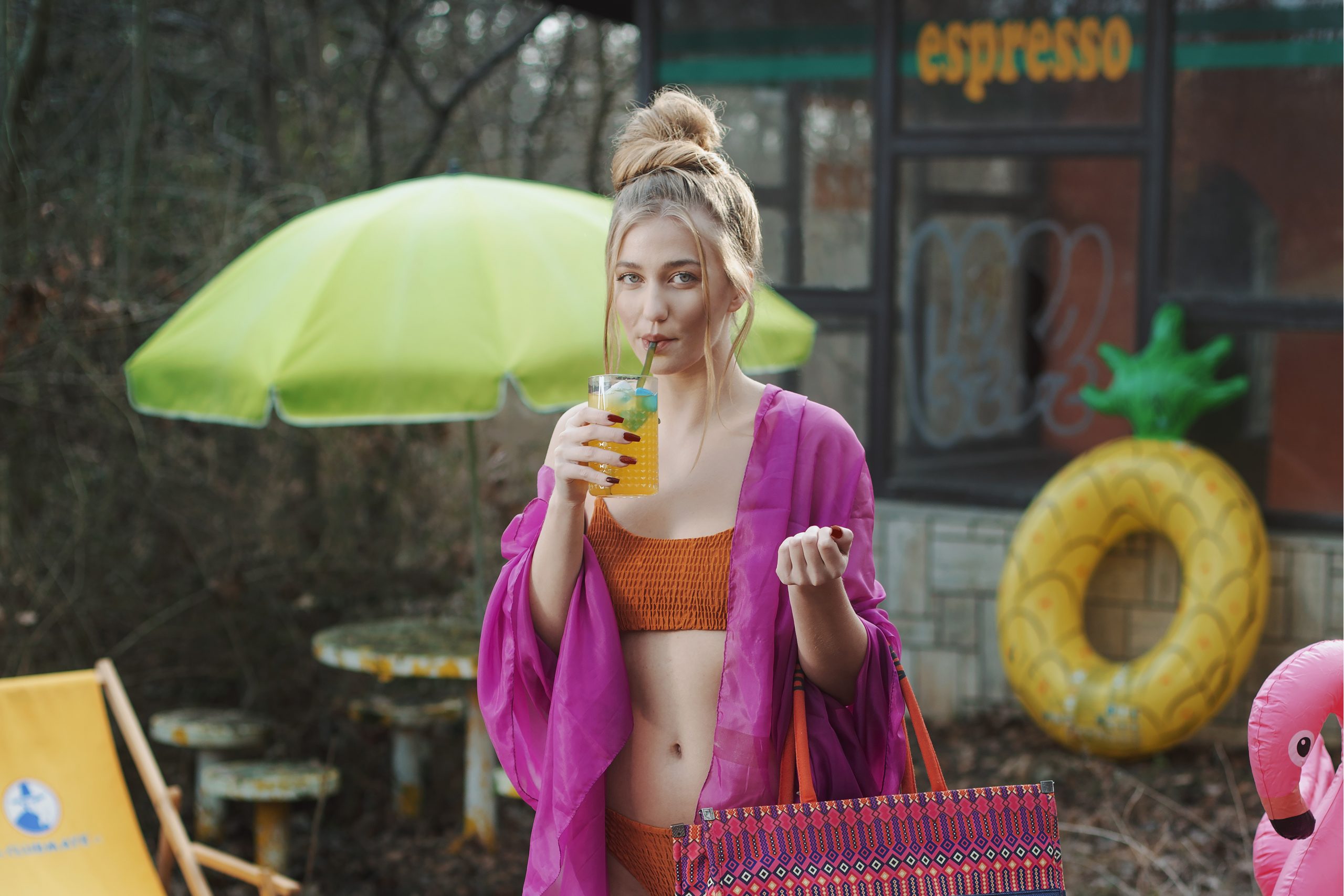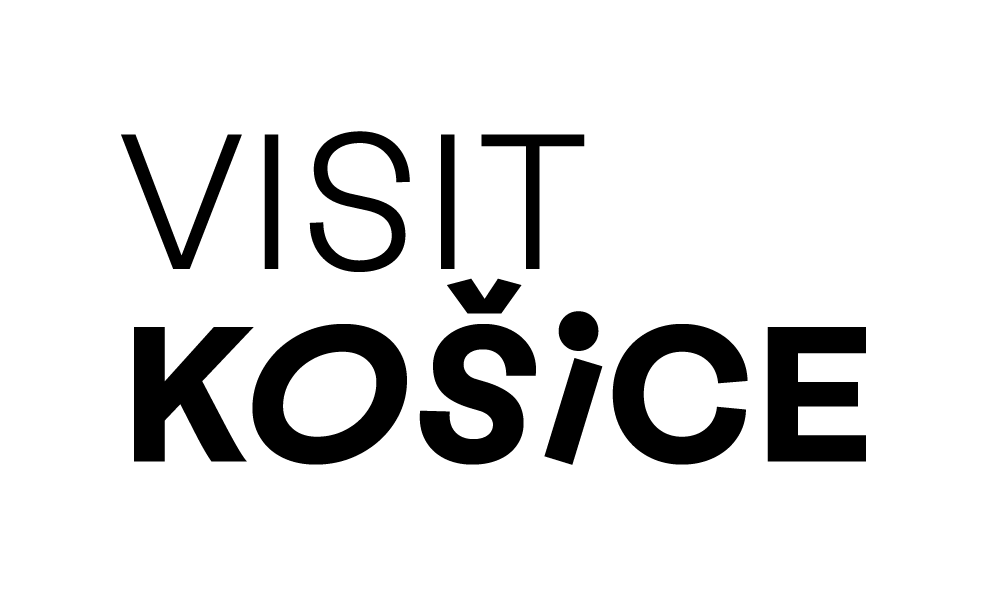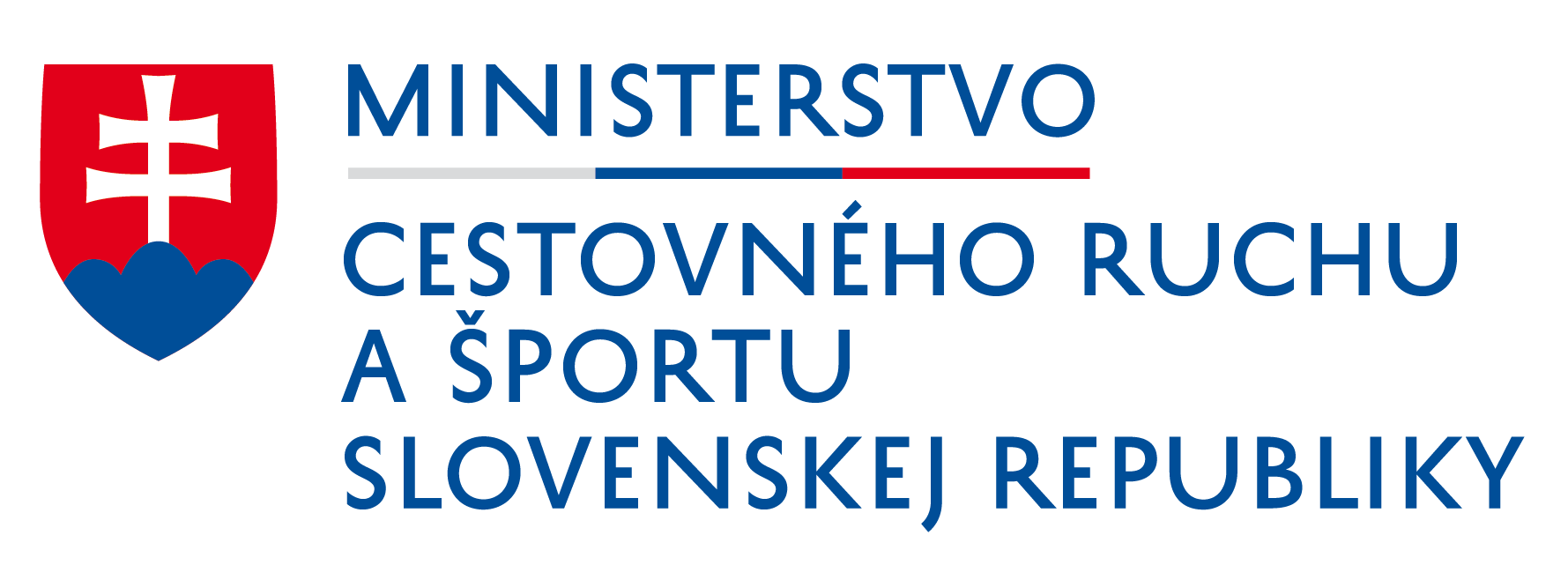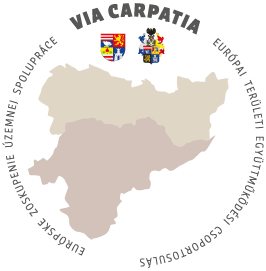Can you perceive the colours of the surroundings, the emotions of the localities, and see the world in full colourful patchwork, even at a time when the world is only black and white and many gates to experience are closed? Of course. you can do that – just take note of the activities from this BUCKET LIST and the discover a pink pelican at the swimming pool, a green church without a roof and windows, and a blue lake in a healing county environment. Also enter the animal aviary, climb to see the grey rocks or visit the Ice Bar open 24/7. And do you know what these places have in common? They are available to you even at a time when many interior activities and places have their doors closed.
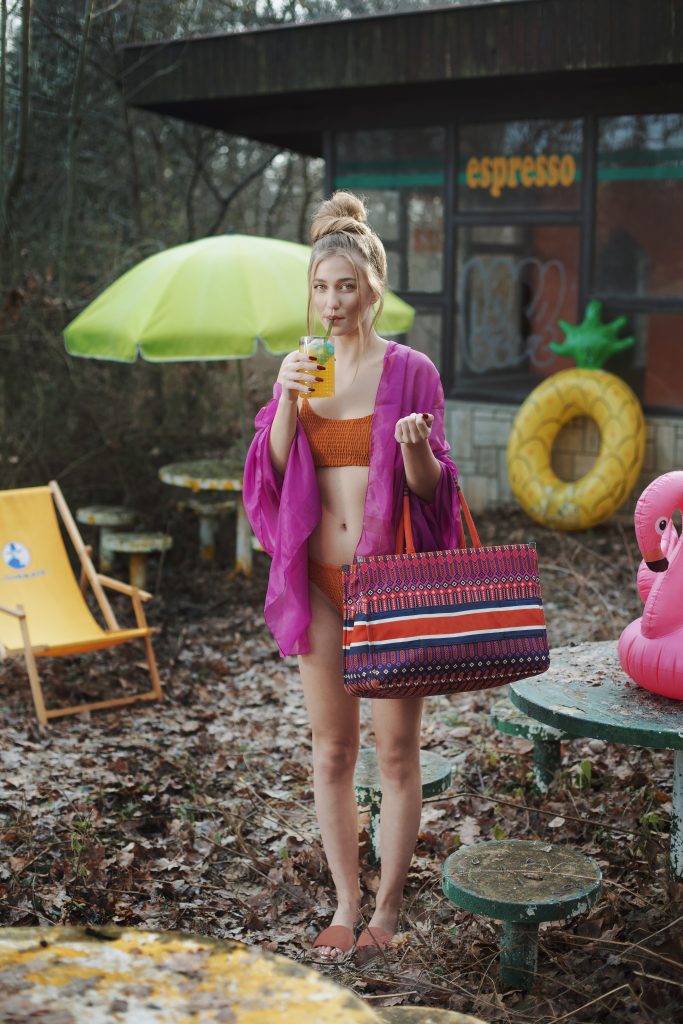
1. Having the whole swimming pool just for yourself
URBEX swimming pool, Byšta
Take the rose-coloured glasses and come along to the swimming pool. Forget the horrible image of places crowded by people in swimsuits. Today you may have privileges you’ve never dreamed of! When you step into the Byšta swimming pool, you will not find aby person there, so you will enjoy it only for yourself. Only an inflatable pink pelican will welcome you. And the world will belong to you! You may dream your dreams here through your rose-coloured glasses. This space will give you a lot of inspiration to think about, for example, how hard the ravages of time worked here, what life stories probably took place in this place, and where forgetfulness and abandonment begin. Enjoy a colourful drink with an inflatable pelican that guards Byšta’s past – its healing salty-alkaline breath from the springs of salty-alkaline mineral springs, where in times long forgotten countless crowds, were coming to, including the count’s manor. People were been attracted to baths for the treatment of gastric, rheumatic, and vascular diseases and sciatica. The Byšta Spa has been known since 1867. A pond with a possibility of boating, water sports and fishing has been built on the Byšta Creek near the swimming pool. If you do get tired of hardening amidst the urbex swimming pool, take your colourful inflatable buddies and jump right into the water!
URBEX swimming pool Byšta on the map.
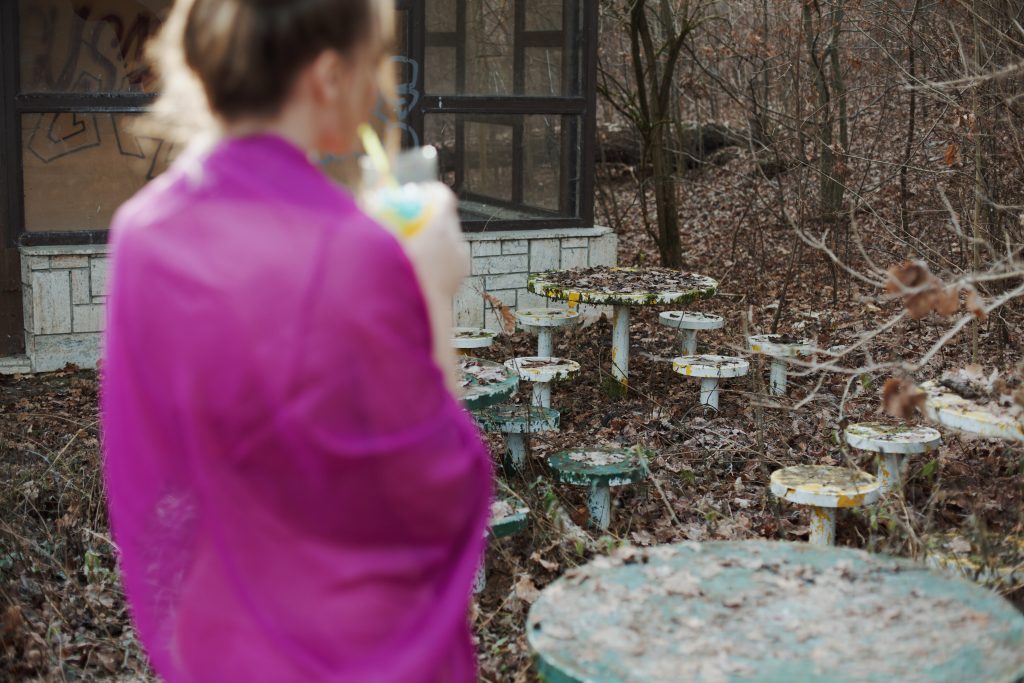
2. Finding your peace of mind
Plant Church, Debraď
You will not find such peace for the soul and body in any other church! It is the temple of eternal photosynthesis, and that is what your brain needs at the time of being locked. St. Ladislaus Church is unlocked for everyone and nonstop, so don’t hesitate! You may enter it whenever you want, and no one will lock it in front of your face. It provides oxygen and magic that will detonate the mental and spiritual charge of positivism in you. And then no one will take it away from you! This church was destroyed by the Turks in the past, but today the surrounding Debrady countryside literally glorifies it. No other church in Slovakia has so much healing magic within it because it has grown up out of plants. It is an architectural uniqueness surrounded by a certain dose of magic. The legend of the pious Hungarian King Ladislaus is attached to this place. On his return from a fiery battle, he prayed for a water spring to drink by his thirsty and death-tired army and save them from destruction. Next to the spring, which is still very abundant and does not dry out even in the biggest droughts, a church dedicated to St. Ladislaus was built at the beginning of the 16th century. Like other buildings, this church was also torn down during the Turkish invasion, but perhaps the very springing living water has kept the memory of the church alive for centuries. Therefore, a stone wall and a symbolic wooden structure in the shape of a former temple gradually grew on the medieval foundations of the church. The tree that grew between the foundations of the building was left in place, so it protrudes through the beams built around it. The wooden structure is slowly overgrown by climbing plants. Thus, a new one grew up on the site of the original ancient temple, the so-called Plant Church. Today, the area of the church and the spring is an important crossroads of tourist routes. Thanks to the legend of the miracle of St. Ladislaus, as well as the alleged apparitions of the Virgin Mary, which allegedly took place in the 1950s, the Plant Church is also a popular pilgrimage destination.
Plant Church on the map.
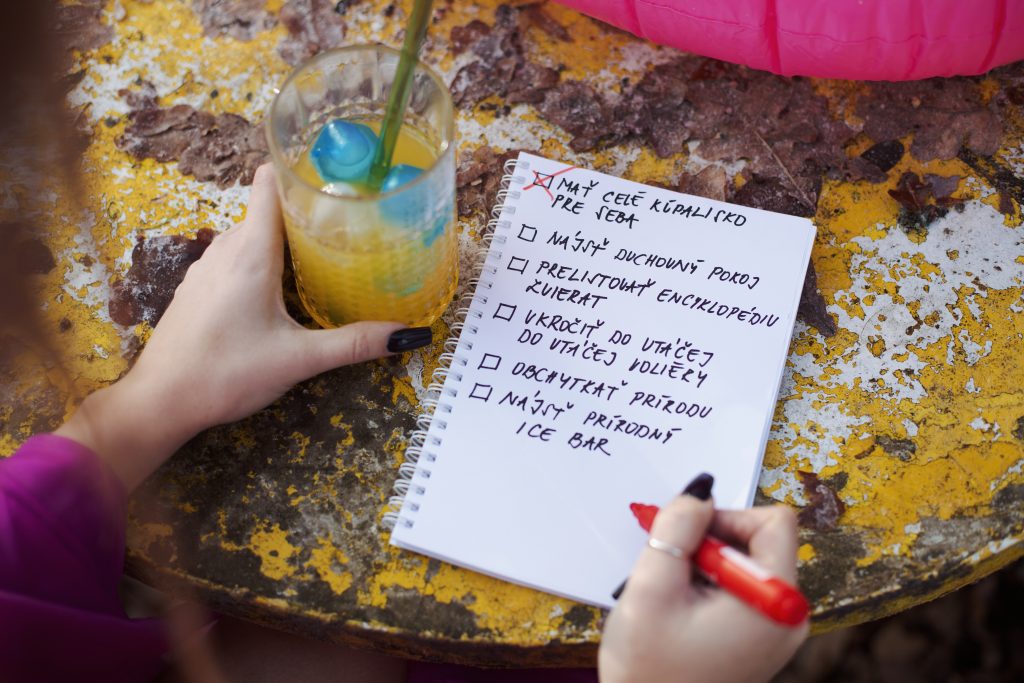
3. Thumbing the pages of the encyclopaedia of animals
Outdoor classroom, the Morské Oko mountain lake
Don’t stay locked at home under a blanket with a book in hand. Surely you no longer know which position to choose from so much sitting. Come out! Open a live encyclopaedia and visit an open classroom and library in one, where you don’t have to be just sitting there! You may run, jump, put your feet on the bench, and even eat your burger! You don’t even have to take a book in your hands, you will turn over the leaves of the book of nature under the most beautiful Vihorlat oaks. From the village of Remetské Hámre, after a pleasant straight in the shade of these trees, you will get to the parking lot and from there it is only a kilometre walk to the Morské Oko Cottage. A pleasant buffet is a stop for some, for others this secluded and very nice place is a place to relax. Right next to it is a fireplace and a canopy with a large table. There you may hide from the impending rain, relentless scorching sun or at the time of the biggest snowstorm. The classroom is always open for you! Plus, you’ll learn something new here. This is where the encyclopaedia of nature awaits you – the Outdoor Science Classroom right on the shores of the Morské Oko (Sea Eye)! There are 7 interactive wooden boards – educational games and 5 “bench-tables” waiting for all curious tourists who are looking for new knowledge. It’s not just ordinary boards and benches! They present information from the life of plants and animals, information on the time of waste decomposition and the rules of behaviour in the forest in an interactive form. Here you may get to know the sounds made by typical Slovak wild animals. This “encyclopaedia” also includes a sound board with a battery powered by a solar panel and a wind mini turbine. Until 1945, Morské Oko and its surroundings belonged to Countess Gladys Vanderbilt-Széchenyi, who in 1924 had a small manor house built by the lake – Kaštielik. The reason for the construction was her daughter’s illness. She finally recovered successfully at this place. The material was transported to the construction site along a “timber rail” – oak grooved rails. The stonework was done by the masters of Snina. The reconstructed Kaštielik is currently used as a representative forest hut and also serves the public. The building is one of the most beautiful forest buildings in Slovakia. The whole area is one of the most beautiful still life sites in Slovakia. It has retained its romance and natural charm.
Outdoor classroom on the map.
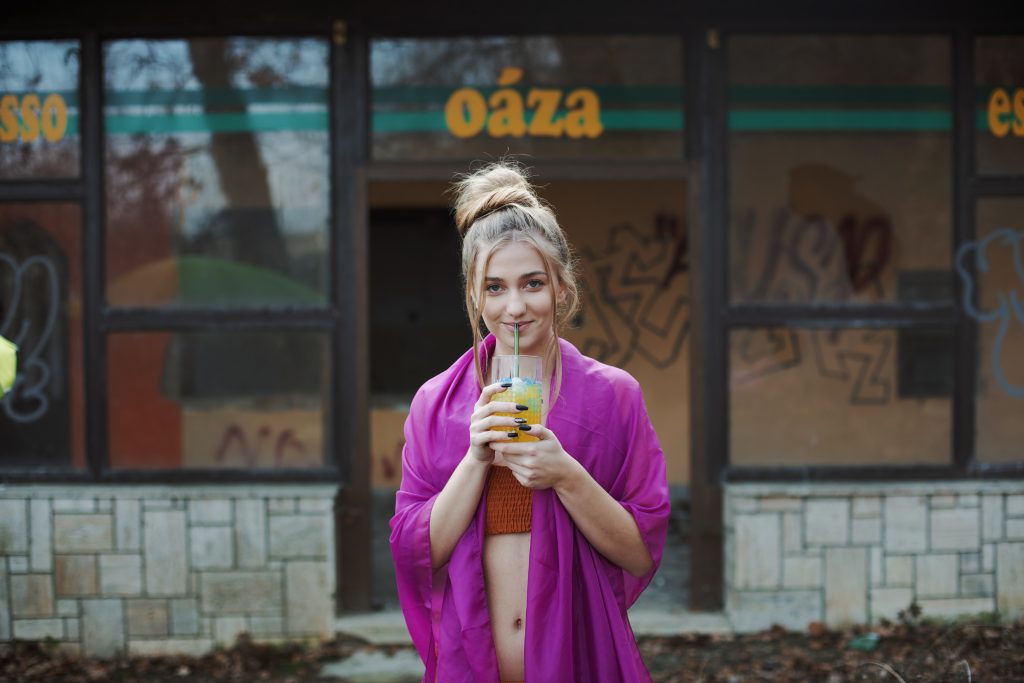
4. Stepping in the bird aviary
Senné Ponds
Do they say there is nowhere to go? Not feeling limited in movement, in the possibilities of walking. Discover a unique Slovak locality, one of what Europeans are looking for. Enter this place, sing along with the best European voices, let your voice scream out to full satisfaction in the wild. A unique bird song will undoubtedly be added to your concert. You may hear the best European repertoire on the Senné Ponds! The area is an important nesting ground for waterfowl aquatic birds, it is an important bird area in Europe. So, visit the European bird holiday destination! Systematic observations have revealed the presence of approximately 160 species of waterfowl and aquatic birds. Even with the naked eye, without binoculars, you may watch many different species of wild ducks, geese, grebes, seagulls, fishermen, harriers, herons and many others. In addition to birds, other animals, such as muskrat, polecat and ermine, have found living conditions on the ponds. Here, in the most important Slovak ornithological locality, flocks of geese “reserved” their lodging place. The Senné wetland has long attracted countless different species of birds, which partly nested here, partly rested during their migratory flights across the Carpathian ridges. Tens of thousands of geese stay above the area and directly at the lodges from November to Christmas. The main species of fish farmed here are carp, grass carp, silver carp, catfish, pike, and others. Adorers of sport and recreational fishing will also enjoy themselves in specialised ponds.
Senné Ponds on the map.
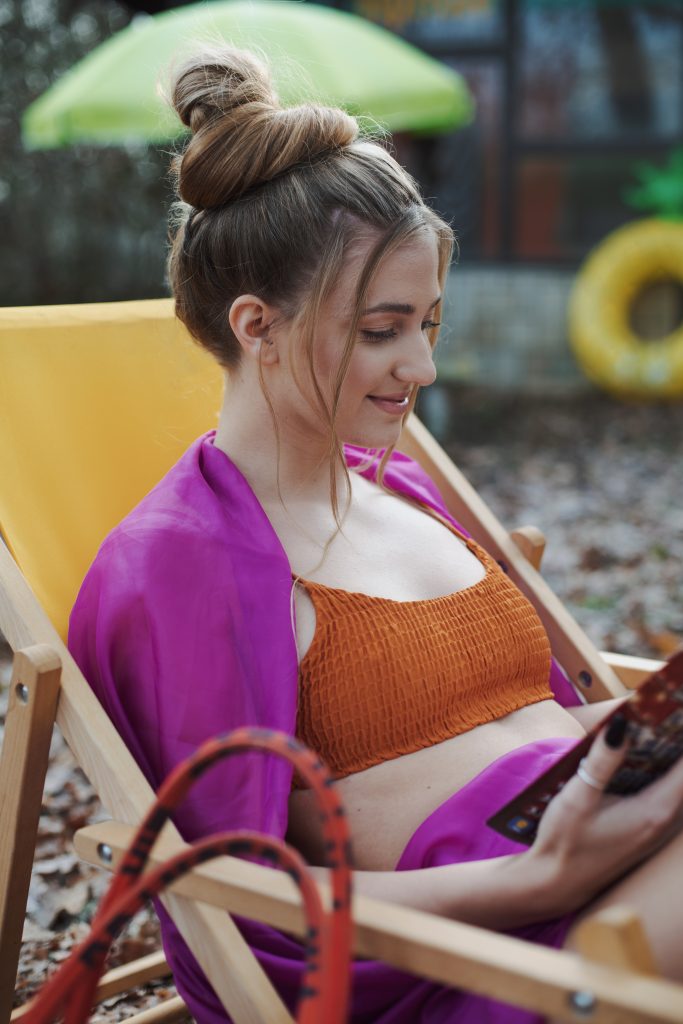
5. Catching the nature
Rokodromo climbing wall
Climb in front of others. Show what you know and what you can achieve! In order not to just relax and enjoying nature and its peace without moving, engage your muscles, all your concentration and go to the heights! It’s time to embrace nature and literally touch it, to experience something new, to discover a new world – the world of grey rocks. The Rokodromo artificial rock, whose name was inspired by the title of an article in an Ecuadorian climbing magazine, is the work of Košice climbers and was the first artificial and training rock in the former Czechoslovakia, the only one at the time. The Rokodromo complex was built in 1987. The wall is 9 metres high, 8 metres wide and 24 metres long. It currently serves as a training rock for climbers, especially for beginners and children. It is set at the beginning of the Čermeľ Valley, on a meadow next to the Children’s Railway. A railing for abseiling is located on the highest tower with a height of approximately 9.2 m. One use climbing safeguards and rely on express trains on a total of nine possible routes. The safeguards are drilled closer together, especially for beginners. Today, a cycle path leads to the wall, which is more than 500 m long from the Children’s Railway station. There are several shelters with a fireplace in the vicinity of the Rokodromo climbing rock, so the barbecue will be a real reward for you after climbing! Right next to the rock, there is also a wetland called No Wonder, Wetland at Rokodromo. A raised wooden bridge leads over the wetland.
Rokodromo climbing wall on the map.
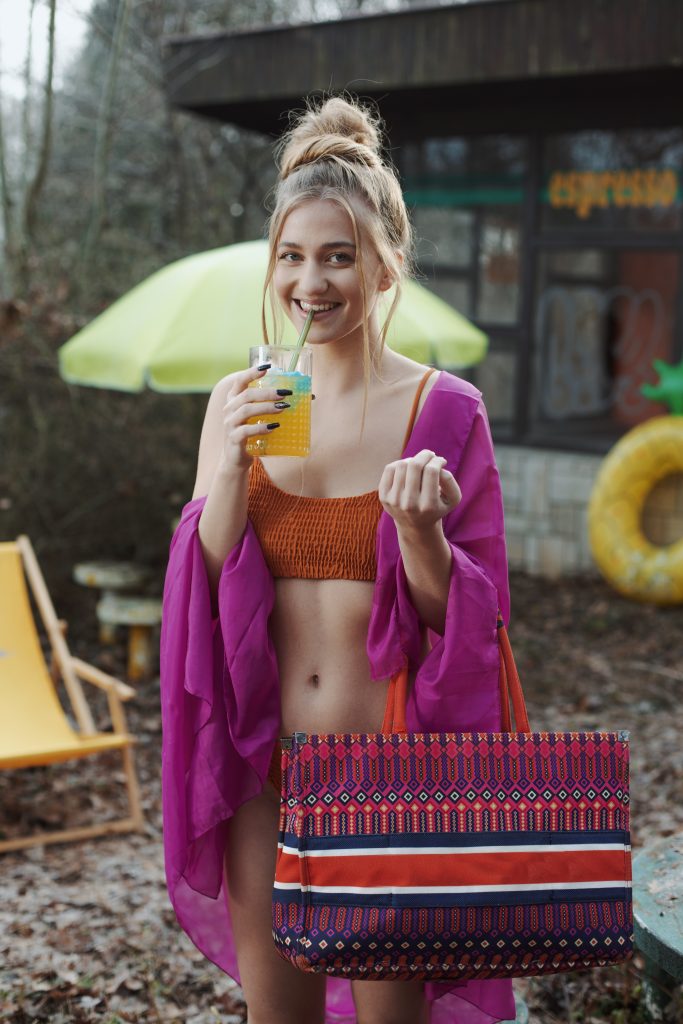
6. Finding a natural Ice Cave
Silica Ice Cave
Are you not going to the night club, just going around? Don’t wander unnecessarily and go to the Ice Club which offers unusual icy beauty. It has been waiting for you here for ages, from the Mesozoic, and has an unusual milieu created from the mid-Triassic light Wetterstein limestones of the Silica mantle. It is one of the curiosities of world significance. This Silica Ice Cave is the lowest temperate climatic zone ice cave in the world! Here you will find the ice abyss, which was created by the collapse of the ceiling of the underground dome about 2,000 years ago. This Ice Club is 1,100 m long and 110 m deep. And why is this club called an ice cave? In the cold cave, cold air accumulates in the winter, which stays down. In spring and summer, water seeps into the cave, meets the cold air and freezes. This means that in the Silica Ice Cave you will come across beautiful ice formations even in the middle of summer. Thanks to this microclimate, suitable conditions for the life of cold-loving forest species of plants and animals are created in the entrance part of the cave, which are typical for the higher mountain ranges.
Silica Ice Cave on the map.
